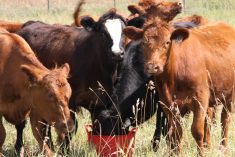HIGH RIVER, Alta. — Cargill Meat Solutions is building a plant at High River to burn specified risk materials derived from the slaughter of cattle to generate power.
Construction has started on this first-of-a-kind project that will handle up to 50 million pounds of SRMs a year and supply 80 percent of the meat processor’s energy needs.
SRMs include the animal parts believed to be most at risk for spreading BSE. Those parts are banned for use in food, feed or fertilizer.
“This is a very green project and one about creating a Canadian beef industry more capable of competing with others around the world and hopefully capture more export markets,” said Bill Buckner of Cargill’s head office in Minneapolis.
Read Also

Organic farmers urged to make better use of trade deals
Organic growers should be singing CUSMA’s praises, according to the Canadian Chamber of Commerce.
The company estimates it will eliminate 21,000 tonnes of fossil fuel emissions annually.
Cargill received a $10 million federal government loan. The company, as well as other funding agencies such as Alberta Meat and Livestock Agency, put up another $25 million.
The plant, which will be built beside Cargill’s packing plant near High River, should be operating by May 2012, said plant manager Scott Entz July 29.
Cargill kills 100,000 cows a year and all SRMs must be removed. These included the skull, nerve tissues, brain, eyes, tonsils, spinal cord and dorsal root ganglia of cattle older than 30 months and the distal ileum of cattle of all ages.
The material is now shipped to Calgary, where it is rendered in a dedicated facility and the final product sent to a special landfill in central Alberta.
Under the new plan, all material will go into a combustion chamber where it will be burned at 850 C to generate steam and destroy potential disease agents.
The small amount of remaining ash can be disposed of in a landfill.
“Because of the temperature we reach, it won’t be considered an SRM material any longer,” said Entz.
Canadian packers have complained about the added cost of removing SRMs. Entz said this process should offset that cost.
The plant could eventually take additional material from other plants and small local abattoirs, he added.
The federal investment came through the slaughter waste innovation program, which makes $40 million available to support and adopt new technologies or processes to reducecosts of dealing with SRMs.















